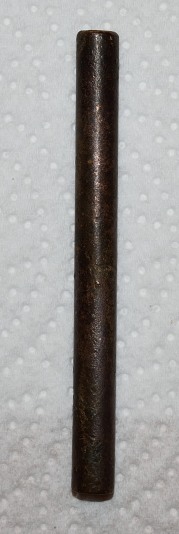When I first started recovering WW2 relics, I hadn’t realised the importance of researching a site first. Initially, I would find an old base, get permission from the landowner, then pitch up at the bits closest to the access roads. This resulted in a LOT of disappointing digs. Yes, I got some WW2 relics, but most of what I recovered was modern trash……beer cans, fag packets, condom wrappers, (and on one memorable occasion, a fag packet and condom wrapper inside half a beer can!).
Slowly I realised that you had to do research to pinpoint likely areas where WW2 relics could be found, and I can now spend weeks or even months researching a site before I think about finding the landowner.
I also gave myself three rules;
- The site cannot have a modern use, (otherwise that’s all you find….modern trash)
- The site must be at least 10 miles from the nearest town or city, (any closer and the youth of said town/city would use it for their beer drinking, fag smoking and condom using activities!!)
- The site should ideally have a patch of woodland that was there during the war.
The last ‘rule’ proved the most important. Any patch of woodland that has survived intact since the 1940s will usually hold a LOT of relics. The land will never have been ploughed, landscaped, built on or otherwise messed with, meaning the relics dropped in the 40s will be exactly where they were dropped, a matter of inches beneath the surface.
And so it is with this site, one I have blogged about before. This old RAOC depot, (as featured in the WW2 Treasure Hunters episode, ‘The Bomb Factory’), holds a lot of relics, IF you know where to look! Fortunately I do, and even though I only had a couple of hours spare, I arrived at the patch of woodland that had been producing some great finds recently. My only concern was that I had covered most of it now, (it’s only a small wood….tiny in fact), so I wasn’t sure I would recover much. But in the couple of hours I was there, I managed some very nice finds, one of which was a first for me, and really awesome!

















Now on to my awesome find.
Over the years, I have recovered many of these items but, after cleaning, this one revealed it was different to all the others I had previously recovered.
It was obvious what it was the second it came out of the ground. A PIAT fuze holder with a PIAT practice No. 425 fuze still inside it. I knew this was a drill fuze the second it came out, due to the closed off end of the fuze and the fact it was obviously solid metal. It contained no explosives at all, ever! The bottom half of the fuze holder was nowhere around (I searched for it for quite some time!), so I had to settle for half of the holder.
When I got it home and cleaned it up, I was very pleased indeed with what it revealed.



A great little find and one that has taken pride of place among the PIAT section of my museum.
Good work Stephen – most impressed and brings back memories – i remember an SQMS telling me that once fired the PIAT was self cocking but to cock it from cold you sat down with feet against the padded butt, your hands grasping the handle/trigger guard, the webbing strap over you shoulder then lie back and stretch til you heard a click to indicate the ‘bloody great spring’ was compressed and the trigger detent engaged. If one hand held the trigger by mistake the spring then jerked you painfully upright again. I think this Snr NCO was one of those who fired the spent carts that you found as he looked furtive during his narrative and then he said ‘one click it’s loaded two clicks yer back’s broke.’
The function of the spring was first to propel the spigot/striker onto the cap then absorb and spread out the recoil as the cart fired the projectile away then to re-engage with the detent ready for the next round. Not one or even two human bodies could withstand the recoil otherwise. Rather clever design don’t you know old boy?
LikeLike
Yes indeed, a clever design but I hear it was a real sod to cock and the recoil could push you back a couple of feet if you didn’t brace your boots into the ground. I also hear the tail section had a rather nasty habit of retracing the bombs trajectory after it exploded against its target, and landing on/next to the guy that fired it!
LikeLike